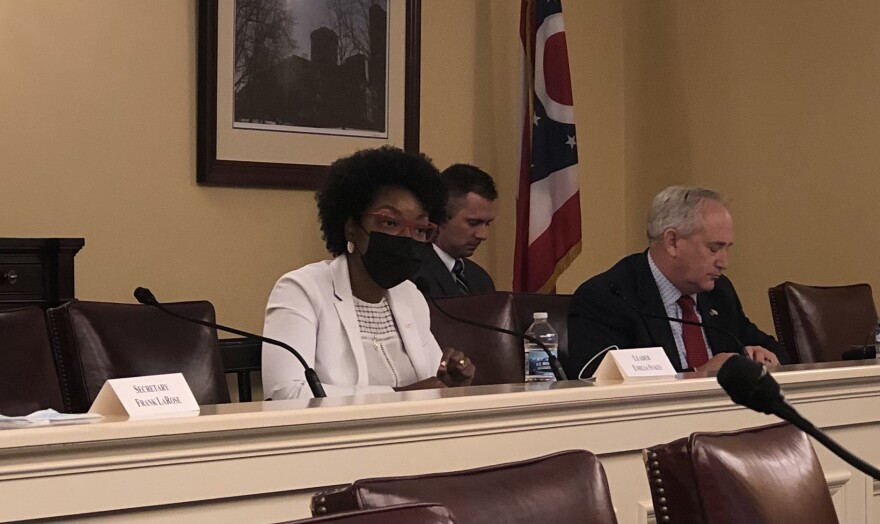Just after the clock struck midnight, the Ohio Redistricting Commission approved new Ohio House and Ohio Senate district maps, that are likely to guarantee a Republican supermajority for the next four years, by a vote of 5 to 2. The two Democrats on the panel voted against the plan. This means the maps will only be in place for four years. A vote with approval by both members of the minority party would have resulted in 10-year maps.
Senate President Matt Huffman (R-Lima) said these maps, which he proposed, follow all the guardrails put in the Ohio Constitution by voters in 2015.
"I think it's important that this Commission vote on a map that is constitutional. This is the only map, with this amendment, that will continue to be the only map that is constitutional," Huffman said late Wednesday night.
But others disagree with the constitutionality of the maps.
The new maps would favor Republicans in 62 House districts and Democrats in 37 House districts. In the Senate, Republicans are likely to win 23 out of 33 seats, leaving 10 districts favorable to Democrats.

House Minority Leader Emilia Sykes said this is clearly gerrymandering, and that it fails to follow certain sections of the Constitution created by a 2015 ballot issue.
"No General Assembly district plan shall be drawn primarily to favor or disfavor a political party. In contrast, the maps adopted today go to absurd length to create a Republican monopoly on legislative power that they have not earned at the ballot box," said Emilia Sykes.
A provision in the constitution says the redistricting commission must draw districts that split along party lines proportional to statewide election results over a 10-year span. In Ohio, that amounts to votes that have split about 54% Republican and 46% Democratic.

Sen. Vernon Sykes (D-Akron) has been working on redistricting reform for years, and was a key leader in getting the 2015 ballot issue passed.
Sykes said these maps fail to accomplish the goal of fair districts.
"I would love for us to have a 10-year, fair plan. There's no way that I would slap the people in the face that promote fair districts and put them in the misfortune that we've been suffering for decades, for another ten years. And I ask, this committee, please listen to the constituents this time," said Vernon Sykes.
While Vernon Sykes and Emilia Sykes voted against the maps, the five Republicans on the commission voted for them. However, the statewide elected officials voiced their disappointment in the process, which went into the eleventh hour of the constitutional deadline to approve maps.
Secretary of State Frank LaRose (R-Ohio) was among the leaders who said they were trying to find a compromise, working with the Democrats on finding common ground. But the process ran into a stalemate.
"It didn't have to be this way. Some of us worked in good faith, in a bipartisan way to try to get a compromise. There are members of this committee who I do not believe worked in good faith to try to reach that compromise. But here we are," LaRose said, stopping short of saying who specifically was acting in bad faith.
Gov. Mike DeWine (R-Ohio) also voiced his frustration with the parties not being able to reach an agreement, saying he had to vote "yes" because there was no end to the stalemate.
"So along with the Secretary of State, I will vote to send this matter forward, but it will not be the end of it. We know that this matter will be in court. I'm not judging the bill one way or another. That's up to a court to do. What I am sure in my heart is that this committee could have come up with a bill that was much more clearly, clearly constitutional. I'm sorry we did not do that," said DeWine.
Auditor Keith Faber (R-Ohio) added that he was hoping to find a way to reach a deal that would get 10-year maps, which means Democratic support, but also a unanimous vote in the commission.
"I'm disappointed profoundly that we do not have a 10-year map, that we do not have a seven person vote. I can tell you that the governor and Secretary LaRose and I spent hours trying to find compromise. I wish we'd found it," said Faber.
Voting rights groups, such as the League of Women Voters of Ohio, have also voiced their opposition to the maps. It is likely groups will mount a legal challenge and take these maps to the Ohio Supreme Court.


